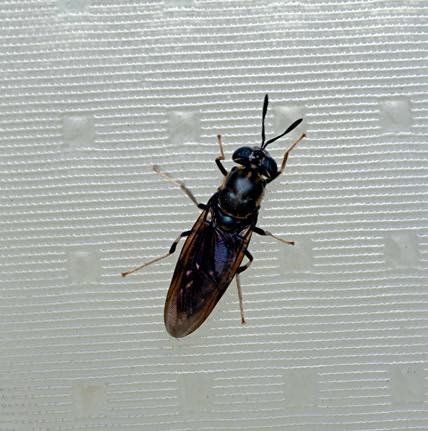
2 minute read
Broilers love larvae
from PoultryNL
love Broilers larvae

Advertisement

The use of imported ingredients from plant origin in animal nutrition, is strongly under debate. Two widely used ingredients, soy and corn have a major impact on the environment and the climate. Insects such as the housefl y and black soldier fl y, might be good alternatives to partly replace soy and corn in poultry diets.
PHOTO: JEROEN BOUMAN
The WUR-led project InsectFeed investigates the options for using insects as an alternative poultry feed ingredient. Funded by the Dutch government, the project is being coordinated by Dr. Marcel Dicke, Professor of Entomology. ‘The main question is: how to develop a sutainable insect-based poultry value chain’, says Dr. Dicke. Poultry naturally eat insects, so broilers are very eager to eat fl y larvae. The InsectFeed project has as stakeholders: the universities of Wageningen and Groningen, research institutes, Rabobank, insect producers, NGOs and other parties.
Housefl y and black soldier fl y
Marcel Dicke: ‘The objective is to investigate the entire supply chain from food waste and other organic residual materials on which insects are grown, up to the consumer. Currently we investigate the housefl y and the black soldier fl y. The latter is known for its resistance to diseases. Both fl ies are easy and quick to breed. And they thrive on a wide scale of diets, i.e. residual streams from food production.’ Flies lay their eggs on decaying organic matter. Larvae hatch from these eggs and are harvested just before they change to the ‘pupa’ stage. At that stage it has the highest nutritional value in terms of protein and fats. In the next stage, the puparium in which the pupa resides does contains too much chitin.

Ethicists
‘Of course, the infl uence on bird welfare and growth parameters receive much attention in our research. And it might seem remarkable, but there are also ethicists involved to address the welfare aspects for both the chickens and the fl ies. After all, these are also animals’, Dr. Dicke continues. ‘Another important aspect is the limited volume of water that is needed to grow larvae. This is a strong asset in terms of sustainability. And last but not least, we expect that the remaining substrate on which the larvae were grown, can be used as organic fertilizer for crops, thus further closing the loop.’ ‘Our aim is to eventually reach an inclusion rate of about 5%-10% of larvae in poultry diets’, Dr. Marcel Dicke concludes. ‘But it may take 5 to 10 more years before this will be common practice. However, this will become a reality, also on an international scale!’
not least, we expect that the remaining substrate on which the larvae were grown, can be used as










